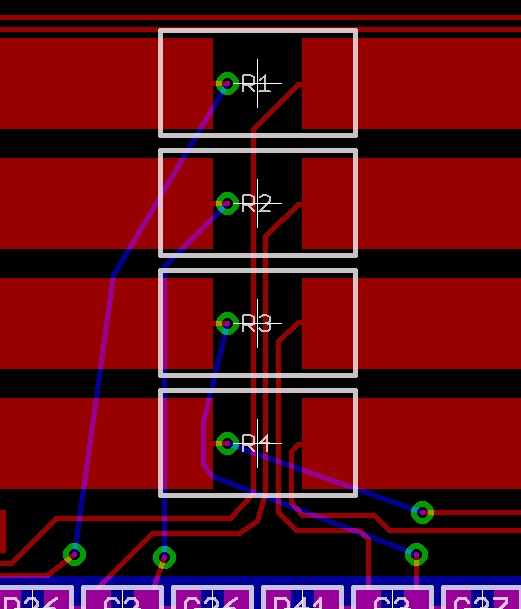Zero Ohm "resistors" are frequently used as links on single side boards because they can be placed by component insertion machines that can insert resistors.
High volume single sided board manufacturers often use a separate link inserting machine - whose frighteningly fast speeds need to be seen to be believed.
A 1 Ohm resistor is "just another component".
It may be used as a current sense resistor or for some other circuit function.
If using resistors for current sensing for measurement purposes.
Worst case voltage drop across them should be small compared to total circuit voltage so that they do not affect operation. eg if a circuit draws 1 amp and has a 5V supply then a 1ohm resistor would drop 1 Volt. This is 20% of total circuit voltage and would be excessive in essentially all real world cases.
A 0.1 Ohm resistor would drop 0.1 V at 1A = 2% of supply and MAY be acceptable depending on circuit.
A 0.01 Ohm resistor will drop 0.01V at 1A = 0.2% and would almost always be acceptable.
The 0.1 Ohm resistor will drop 100 mV per Amp so 1 mA will produce 100 uV.
Many low cost DMMs have a 200 mV range with a resolution (but not accuracy) of 0.1 mV = 100 uV, so they can read current in a 0.1 Ohm resistor to 1 mA resolution. Similarly they can read current in a 0.01 Ohm resistor to 10 mA resolution.
Placing the sense resistors with one side grounded allows ground referenced measurement which may be convenient. The Voltage drop must not affect circuit operation.
Sometimes bypassing the sense resistor with a capacitor - maybe 10 uF or 100 uF depending on circuit, will further reduce impact on the circuit.
Where high frequency noise is present use of a DMM or other meter to measure voltage so as to calculate current will give bad results die to noise entering the meter. In such a case use an eg 0.1 Ohm sense resistor, feed the voltage via a series 1k resistor to the meter and add a say 10 uF across the meter terminals.
____________________________________
Here is a Panasonic "universal axial inserter" at work. I set the start to 35 seconds as the prior part is less consistent.
My recollection is that the wire-link-specific inserter was faster again. It fed wire from a reel, shaped, cut, inserted, cinched and cut it. ... Here we go - wow agh wow - faaaaaast wire link former inserter
@Marcelm said: "... whose frighteningly fast speeds need to be seen to be believed."_ - You're not kidding! (the video is of resistor insertion rather than links but ehh)

